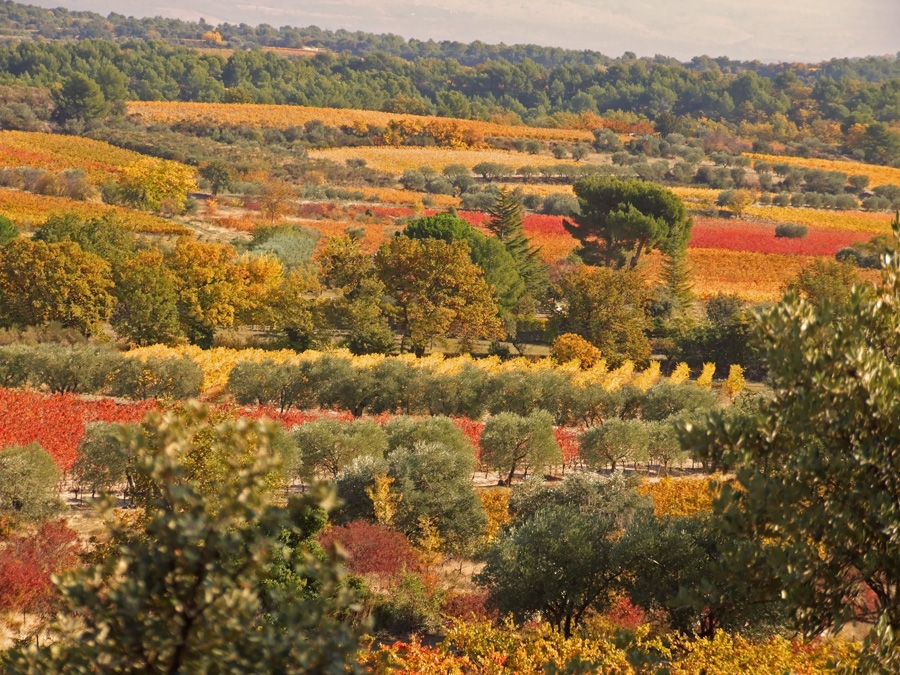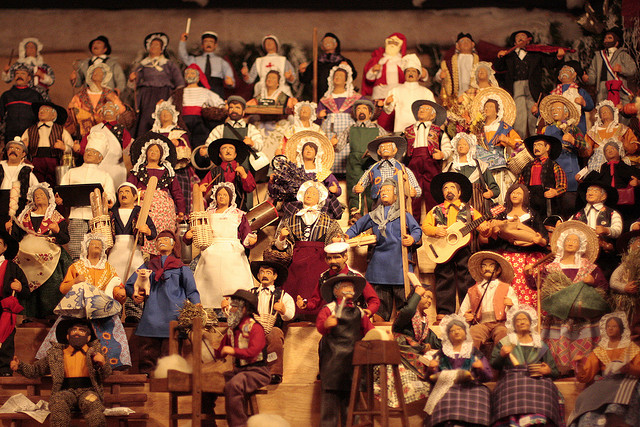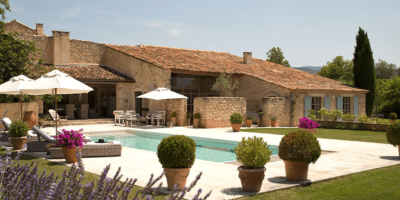5 Good reasons to visit Provence during the Christmas period.
In a previous blog post I introduced the virtues of holidaying in Provence off-season, taking the example of the Jazz scene to show how active the region is all year round. Today we will take a look at the Christmas period in Provence. It is a little known fact to most visitors of sunny Provence that this region has a rich Christmas tradition which makes for a great cultural and culinary experience in the South of France. But Christmas is a special period for everyone so why should you leave your home to spend it abroad?
1 It lasts 2 months.
 Christmas in Provence is scheduled around a traditional calendar called “la Calendale” which starts with “La Sainte Barbe” on December 4th and ends with “La Chandeleur” on February 2nd. Sainte Barbe is also known as Saint Barbara and on her day (every day in the french calendar has a patron saint) people seed wheat in a saucer with cotton and watch it grow for good fortune. It is also the time when Christmas decorations start to appear, the Christmas tree, but also Provençal specific traditions and events such as winter wine events.
Christmas in Provence is scheduled around a traditional calendar called “la Calendale” which starts with “La Sainte Barbe” on December 4th and ends with “La Chandeleur” on February 2nd. Sainte Barbe is also known as Saint Barbara and on her day (every day in the french calendar has a patron saint) people seed wheat in a saucer with cotton and watch it grow for good fortune. It is also the time when Christmas decorations start to appear, the Christmas tree, but also Provençal specific traditions and events such as winter wine events.
2 Christmas markets

Christmas markets start to appear in major towns of Provence around the time of Sainte Barbe, each stall selling wheat for charities and growing their own miniature crop. The markets in Aix-en-Provence and Avignon (23rd November until 1st January 2013) are particularly well noted with a wide range of products. From delicacies such as Foie Gras, Ginger-bread, calissons, truffles (both of the mushroom and chocolate type) mulled wine or Christmas decorations like santons, Christmas baubles, etc.
Christmas markets in Provence differ from their more famous Alsatian counterparts in that they’re usually sunny sober occasions where white and gold replace the traditional germanic/ Anglo-Saxon red and green of decorations. If you are in Provence at the end of the year you will find the permanent Christmas markets to be a great place to try out local produce and discover traditional arts and crafts that you would not have come across during the summer time.
3 13 desserts and counting
One of the best known traditions of Christmas in Provence is the 13 desserts. As with all things in Provence’s tradition it is full of religious symbols. On Christmas eve after going to the Midnight Mass and seeing the living Nativity (reenacted by the local parish’s children) families go home to have supper on a table set up with three tableclothes representing the Trinity and the three saucers with the wheat they have sown 20 days before. The supper itself is supposedly lean, which in truth means it is composed of fish and seafood. The main attraction is of course the Thirteen Desserts.
The tradition although recorded as existing in the Middle Ages was only defined in the early 20th century. The Thirteen Desserts is not only a Christmas tradition but a symbol of Provençal culture and was one of the main concerns of the Félibres (a 19th century cultural movement to preserve Provence’s heritage). You can find the Thirteen Desserts on all Provençal markets and bakeries, the locals will be more than happy to share their knowledge of a heritage they are very proud of. Each dessert has a meaning, for example dates represent Jesus’ oriental origins, you may find the full list here.
4 The Nativity and santons

The traditional Crib (Crèche in French) is not only a religious affair it is also something every community takes great pride in presenting each year. You will find one in every family home. Town halls have their own cribs, usually of quite impressive sizes. Every church has its crib, some boastings santons hundreds of years old. The Cribs in Saint Siffrein (Carpentras), Notre Dame des Doms (Avignon) and the Avignon town hall are very popular. The tradition of painting terra-cotta figurines and sometimes dressing them in miniature attires is a Provençal tradition that has spread recently to the whole of France. Some villages are famous for their artisans such as Séguret and Aubagne. The tradition goes back to the Revolution of 1789 when churches were closed and santons were a means to have your own miniature Saints and Holy Family at home.
Nowadays the Crèche not only includes the Holy Family, shepherds, angels and wise-men but also all the characters of the traditional Provençal village. Cribs evolve along the Calendale with baby Jesus, the shepherds and the wise-men being added until it is put away until next Christmas on the “Chandeleur” in Feburary.
5 It is a trip in Provence’s traditions.
 As shown in the above list, coming to Provence in winter time means discovering a part of Provence that is overlooked in peak season. Christmas in Provence is a wonderful time to discover the South of France, its traditions, history and delicacies. If you are looking for a different Christmas with quality food, drink and centuries of traditions upheld proudly by the locals, Provence is the destination for you this Christmas.
As shown in the above list, coming to Provence in winter time means discovering a part of Provence that is overlooked in peak season. Christmas in Provence is a wonderful time to discover the South of France, its traditions, history and delicacies. If you are looking for a different Christmas with quality food, drink and centuries of traditions upheld proudly by the locals, Provence is the destination for you this Christmas.
Have you already enjoyed winter in Provence?
If you have any questions regarding this article , we would love to hear from you.
Dylan
You can contact us via [email protected] or leave a comment.
To subscribe to our Newsletter simply click the letterbox.





So many good reasons to celebrate Christmas in Provence! 🙂 Hopefully one day we will get to do this. I would LOVE it! 🙂
Yes France has a rich regional heritage and though Alsace is more famous for its festive season, Provence has a very rich christmas tradition.It is very important to people here to celebrate Christmas the Provençal way.